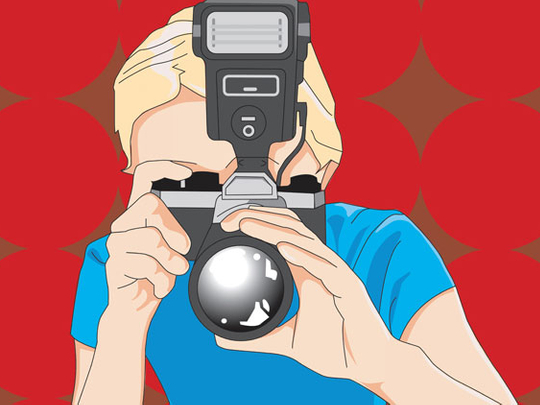
Whether you are a beginner or an expert, you can always try to improve your photographic skills. Compact digital cameras and in-built phone cameras have made photography easier.
The gap between pro and amateur is also slowly closing with technology. Today, you don’t need a very high-end camera or to be a professional to shoot good images. While most cameras now offer good resolutions and come with plenty of built-in features, apps and editing tools, it is the use of right technology that distinguishes a good photograph from an average one.
Choosing a new camera
With the market flooded with a range of digital brands, it is not easy to decide on the perfect camera that will best suit your needs and budget. Hendrik Verbrugghe, Marketing Director, Canon Middle East says the key consideration should be the sensor size — either full frame or Advanced Photo System type-C — as it impacts on creativity and shooting distance. The speed or frame rate should also be conidered as this allows you to capture moving subjects.
Experts say it is critical to find out the ISO range of a camera. It helps determine the amount of light required for a good exposure. A higher ISO will let you to get better exposure in low light.
When shopping for a camera, also look at its video function. Aadil Shaikh, Product Manager, Digital Imaging, Sony Middle East and Africa FZE, says, “Most cameras today are able to record HD video. If this feature does not exist, the camera is an old model and it’s advisable not to invest in it.”
If you want to shoot videos in ultra high definition, a camera with 4K resolution is your best bet. These cameras deliver four times the picture resolution of standard 1080p cameras.
Shaikh, adds, “If you travel often, go for a super zoom camera, while an advanced compact camera is the best option for photographers who like to capture pictures of family, especially children. For selfies, choose a camera with a screen that can tilt and flip. Also check if the camera has a silent shooting mode. It comes in handy in a crowd when you want to be discreet.”
Cameras equipped with a range of preset modes are ideal for amateurs due to their ease of use. Preprogrammed shooting modes allow a photographer to simply shoot images and not worry about aperture size and shutter speed.
Interesting features such as scene, face, moving subject and low light recognition, allow users to automatically get the right settings and makes the process of taking pictures easier and faster, says Yuta Kawamura, Marketing Manager Electronic Imaging Division, Fujifilm Middle East. Another fun and easy feature is the advanced filters, which create special effects without the need for editing.
Smartphone cameras
When it comes to buying a smartphone with a built-in camera, first think about what you intend to do with the photos.
Izzat Kittaneh, Business Director Middle East and Africa, Sony Mobile Communications, says, for instance, if you want to print the images in larger than standard photo size, invest in a smartphone with a high megapixel capability. The lens size and range are also critical considerations, as they will allow you to take a range of shots from portraits to landscapes without experiencing any distortion. “The software supporting the camera hardware determines how easy or hard it will be to utilise the camera,” Kittaneh says.
Also look at a smartphone’s capability to shoot high dynamic range photos. Hayssam Yassine, Head of Telecommunications at Samsung Gulf Electronics says that the HDR feature in Samsung’s Galaxy S5, for example, ensures that your pictures capture the tiniest of details, even in low light conditions.
Mobile phones now feature plenty of smart technologies that have made photography easier than ever. For instance, Samsung’s Galaxy S5 camera features face detection. This is the perfect feature for portraits. It automatically detects the face of anyone you are about to snap, ensuring the camera focuses on the face and takes the perfect shot.
Sony Xperia’s Info-eye app, on the other hand, gives users information about places, monuments and objects around them by taking images of them.
Kittaneh says that along with a high mega pixel count and user friendliness, a consumer must look at the phone’s data space. “A minimum of 16 to 32GB storage space is required to store images. Furthermore, all the features need to sync well with social media via easy share and distribution apps.”










